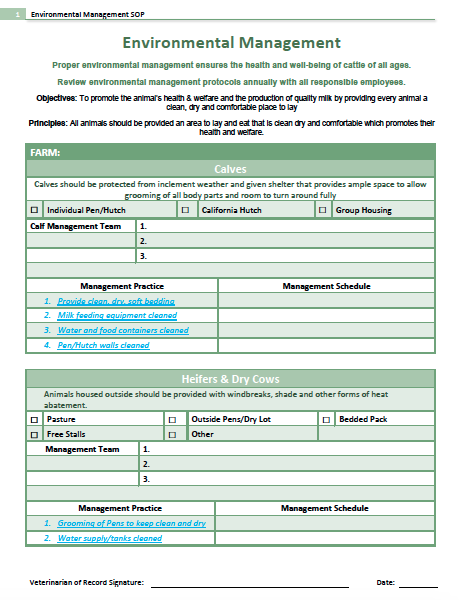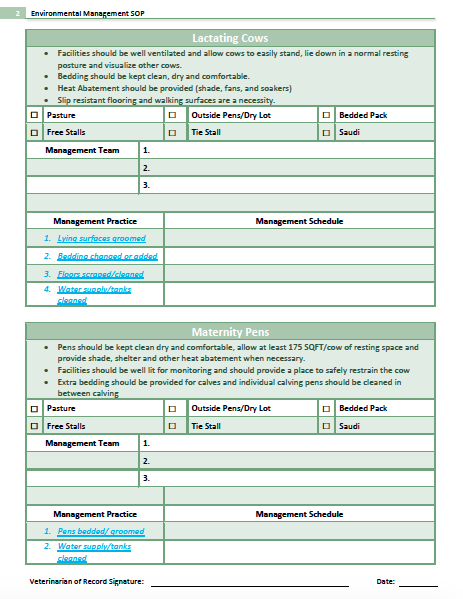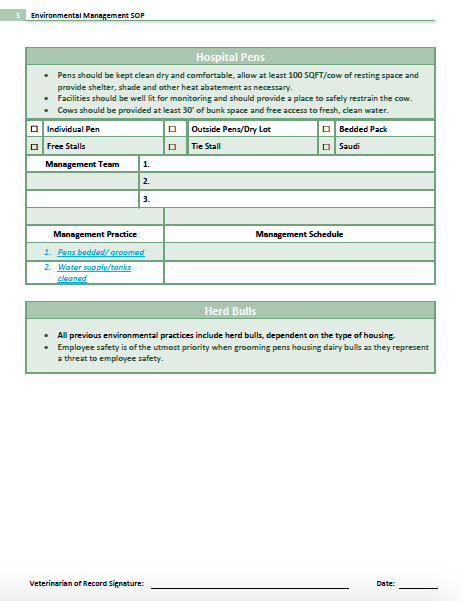Environmental and Housing Management
Written protocols should be in place and reviewed annually with your veterinarian and employees to ensure that certain procedures are carried out appropriately.
Goals:
To promote health, welfare, and the production of quality milk by maintaining clean, dry, and comfortable places for every animal to lie down.
How to Assess:
Review the environmental management protocol to confirm that the following information is included and that appropriate criteria are being met:
Dairy Well
Management practices should include:
- Providing clean, dry, soft bedding and lying surfaces
- A schedule for frequent pen grooming
- A schedule for cleaning floors (lactating cows only)
- A schedule for cleaning water and food containers and any feeding equipment
National Dairy FARM Program
A written protocol is not required for this assessment.
- Flooring surfaces must be maintained to provide traction at all times and reduce the risk of slipping
- Visual contact with other animals should be provided for all classes of cattle, excluding the cows closest to calving
- All animals have a resting area that provides cushion, insulation, warmth, dryness and traction at all times when away from the milking facility
Validus
A written protocol is not required for this assessment.
- Electric fences and crowd gates must be designed, maintained, and used so that contact with them does not case injury
- General facilities (e.g. flooring, headlocks, water troughs) maintained to prevent animal injury
- Stall mattresses must be maintained
- Edges not pulled up as a tripping hazard
- Bedding maintained daily
- Lot surfaces, mounds, and traffic lanes maintained to prevent animal injury
- A minimum of 18 in. per cow of feed bunk space must be provided
- Stocking density must not exceed 120%







